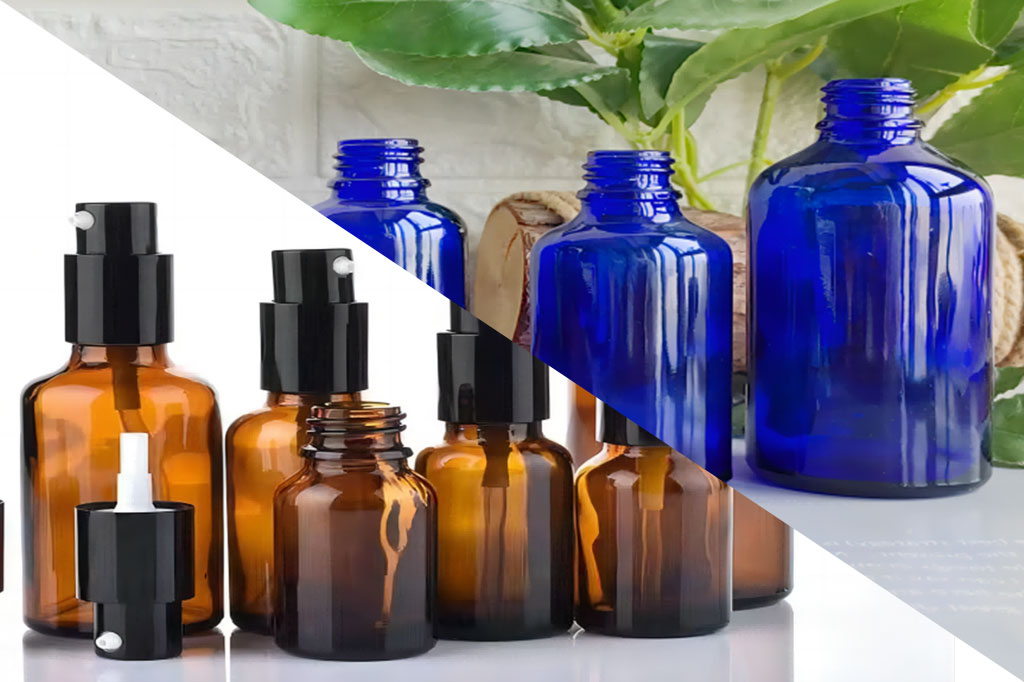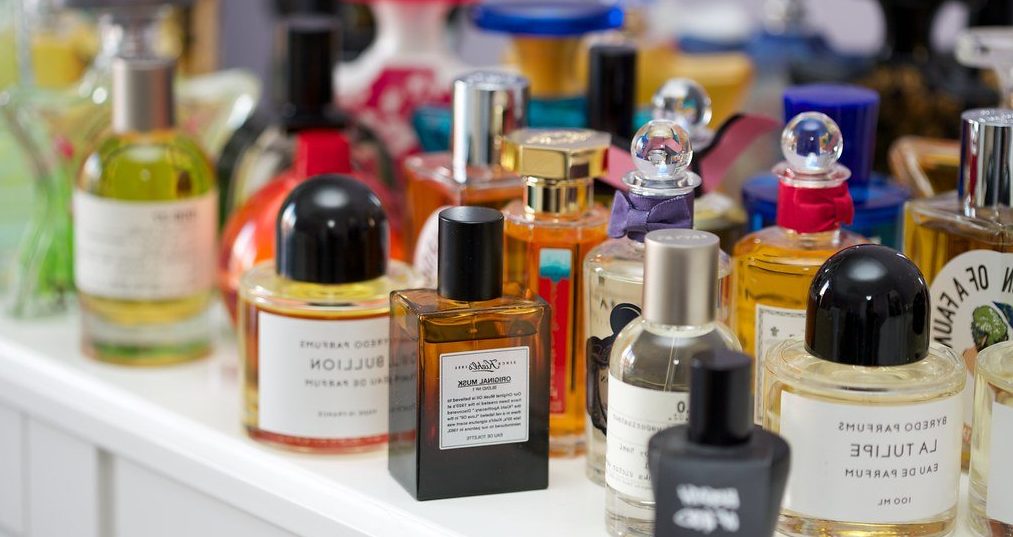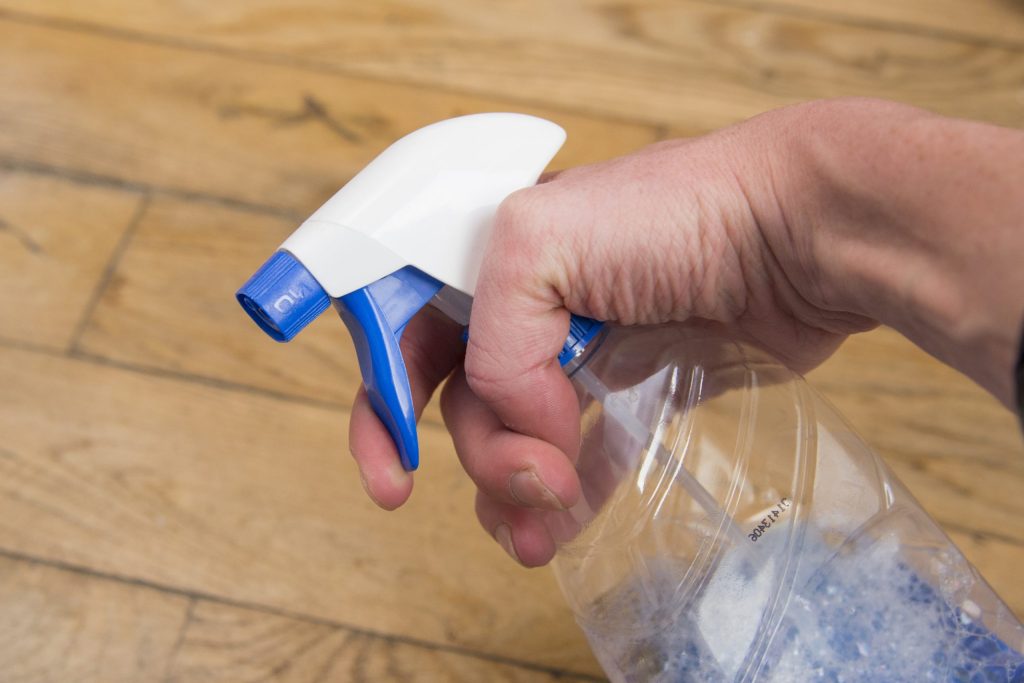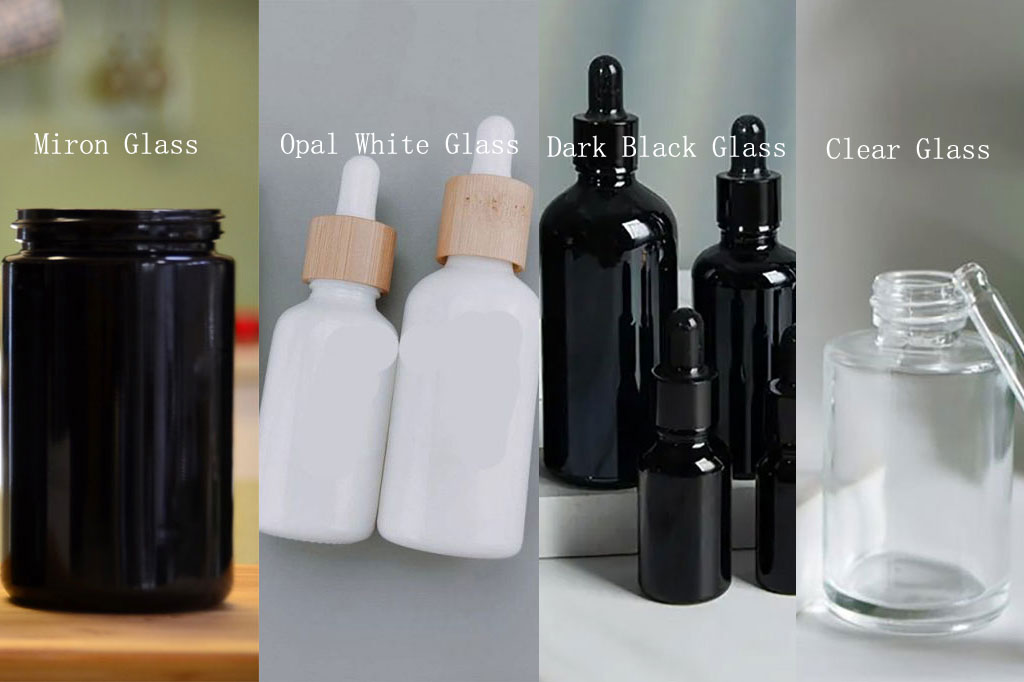Ultraviolet (UV) radiation is crucial for life but poses risks to cosmetic materials. UV rays can penetrate glass, degrading organic compounds in cosmetics, and altering color, texture, and efficacy. Additionally, UV exposure can hasten the breakdown of active ingredients, reducing product effectiveness over time.
To mitigate UV damage, anti-UV colored bottles are used in cosmetic packaging. These bottles filter harmful UV wavelengths, protecting product integrity. Using colored glass helps maintain the stability, potency, and appearance of cosmetics throughout their shelf life.
Anti-UV Colored Bottles Common Options
When it comes to selecting anti-UV colored bottles for glass cosmetic packaging, cobalt blue and amber are widely favored for their effectiveness and aesthetic appeal. These colors not only provide UV protection but also enhance the overall presentation of the product, making them popular choices among cosmetic brands worldwide. Here is a comparison of the characteristics of the two types of bottles.
Feature | Cobalt Blue Glass Bottles | Amber Cosmetic Glass Bottles |
Color | Deep blue hue | Warm brown hue |
UV Protection Range | Blocks UV rays below 450nm | Blocks UV rays below 500nm |
Light Transmission | Moderate | Low |
Aesthetic Appeal | Vibrant, visually striking | Classic, elegant |
Ideal For | Light-sensitive cosmetic products | Vitamins, antioxidants, and photosensitive cosmetics |
Production Principle | Cobalt oxide infusion during manufacturing | Iron, sulfur, and carbon compounds inclusion |
UV Resistance | Effective against shorter UV wavelengths | Comprehensive protection against UV rays up to 500nm |
Cobalt Blue Glass Bottles
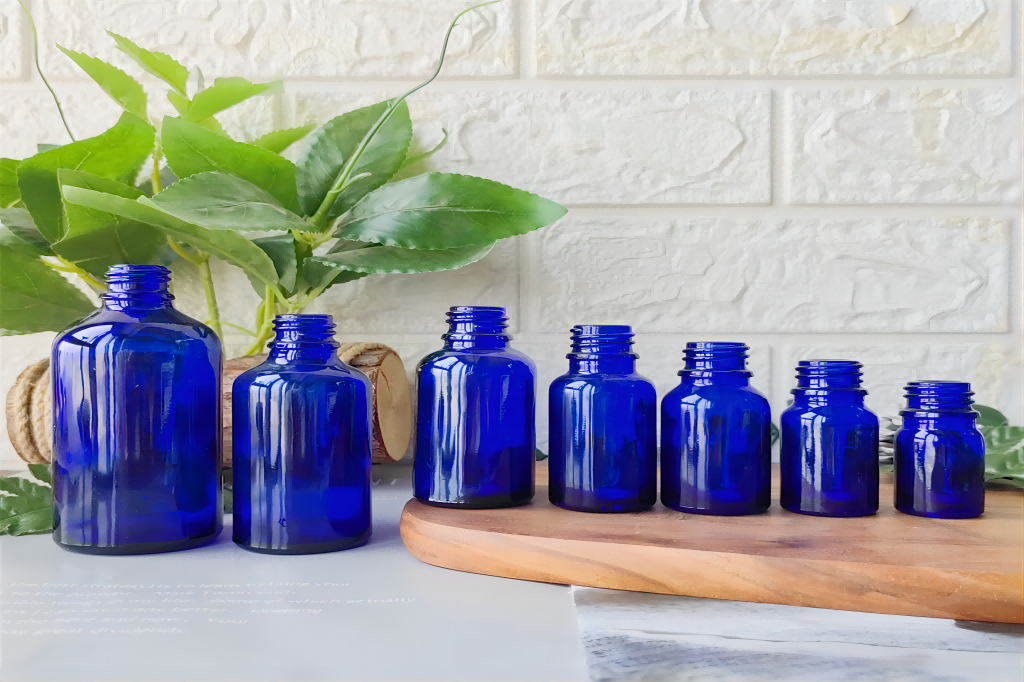
Cobalt blue glass bottles are made by adding cobalt oxide during the glass melting process, giving them a deep blue color that filters UV light, blocking wavelengths below 450 nm and absorbing about 50% of UV light.
This offers moderate UVA protection, making them ideal for cosmetics that showcase true color, such as perfumes and colored lotions, while also providing UV filtration.
Amber Glass Bottles
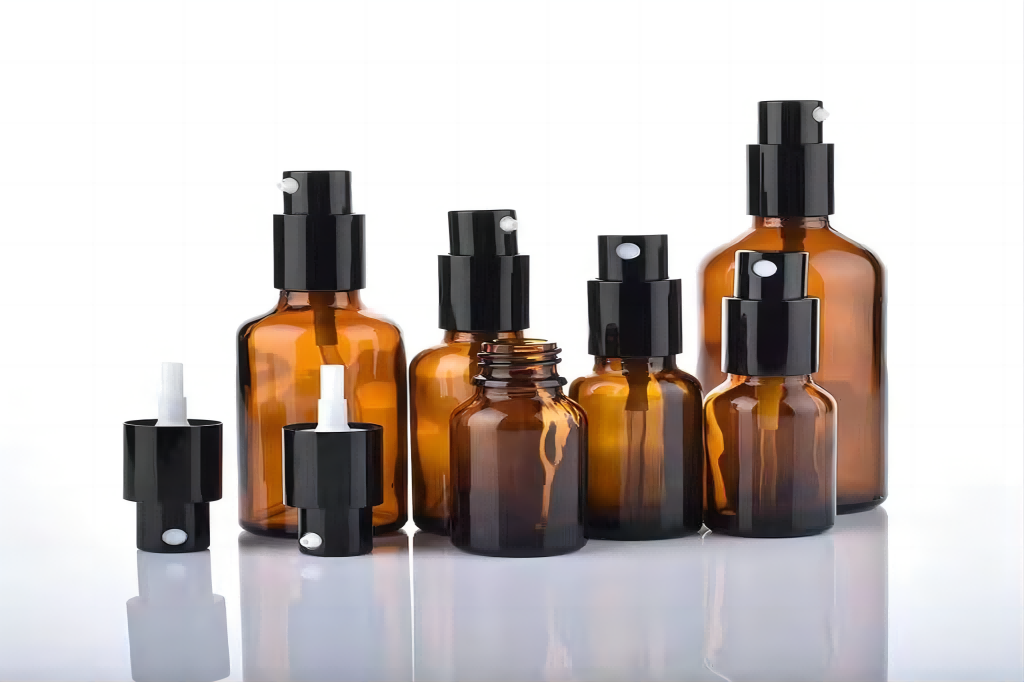
Amber glass bottles are produced by adding iron, sulfur, and carbon to the glass, creating a dark, opaque material that offers excellent UV protection, blocking over 90% of UV rays up to 500 nm.
This is ideal for preserving sensitive ingredients in cosmetics, such as essential oils and pharmaceuticals. The traditional amber color conveys reliability and is favored for health-focused products, while its opacity ensures maximum protection from light exposure.
Conclusion
Cobalt blue glass bottles offer effective UV protection, specifically blocking shorter wavelengths, making them ideal for sensitive formulations like oils and serums. Amber glass, on the other hand, provides more extensive UV protection, making it suitable for a broad range of photosensitive products, including vitamins and antioxidants.
The choice between cobalt blue and amber glass bottles hinges on product needs and aesthetic preferences. Understanding their UV-resistant properties allows manufacturers to make informed decisions that enhance product longevity and quality in the market.

